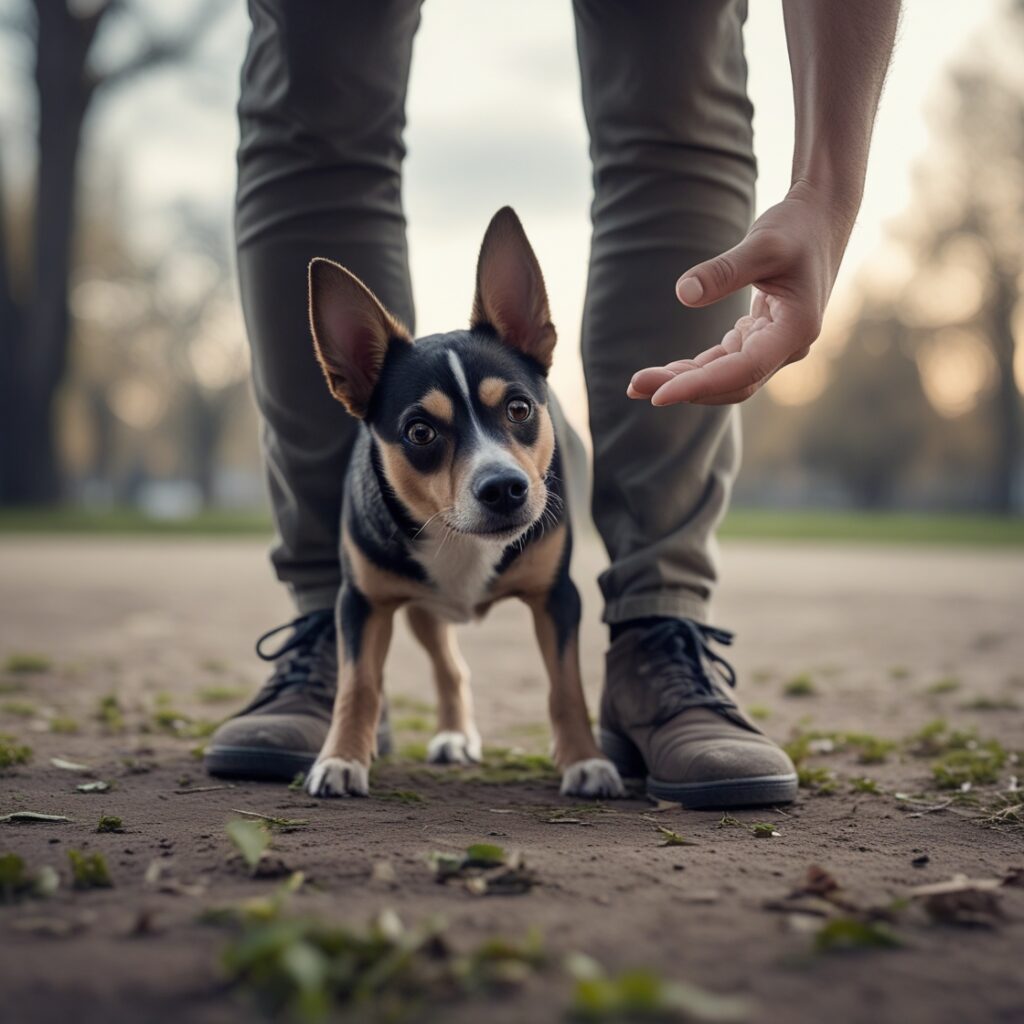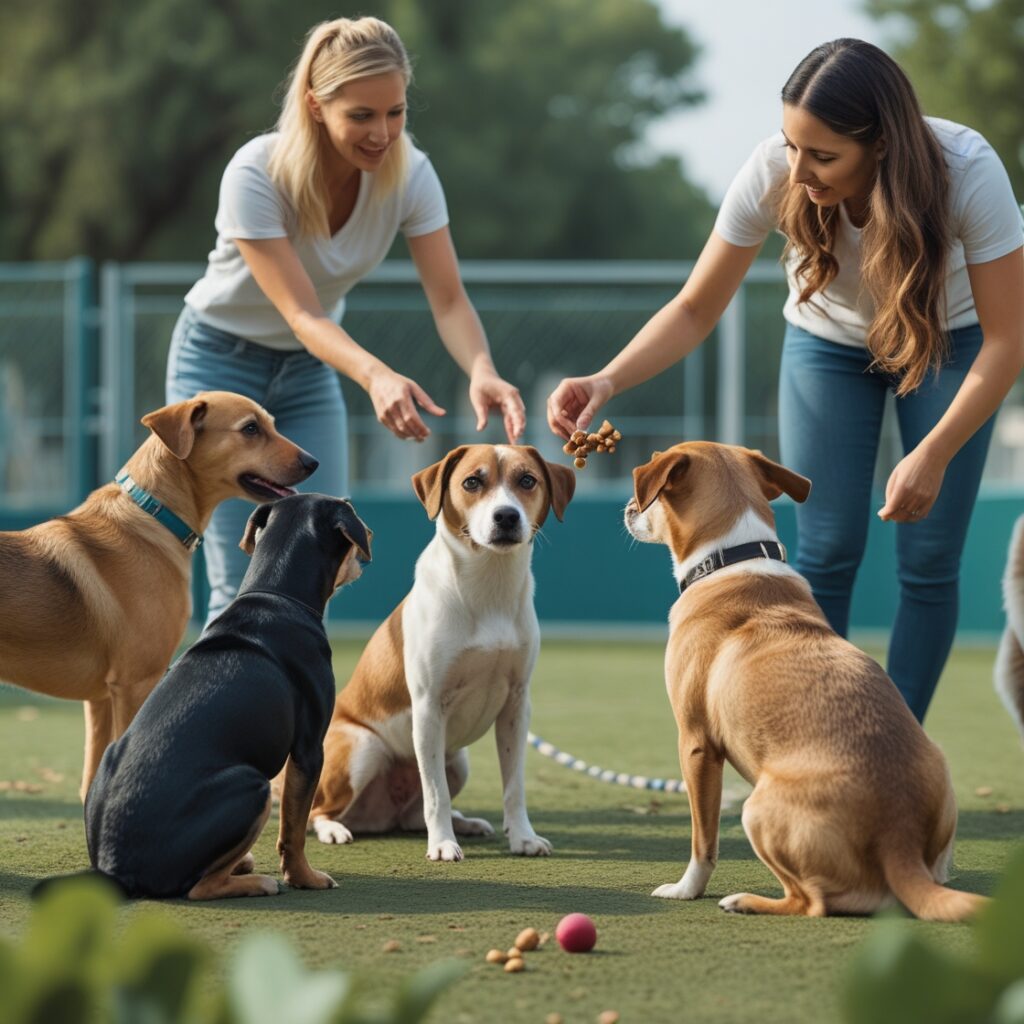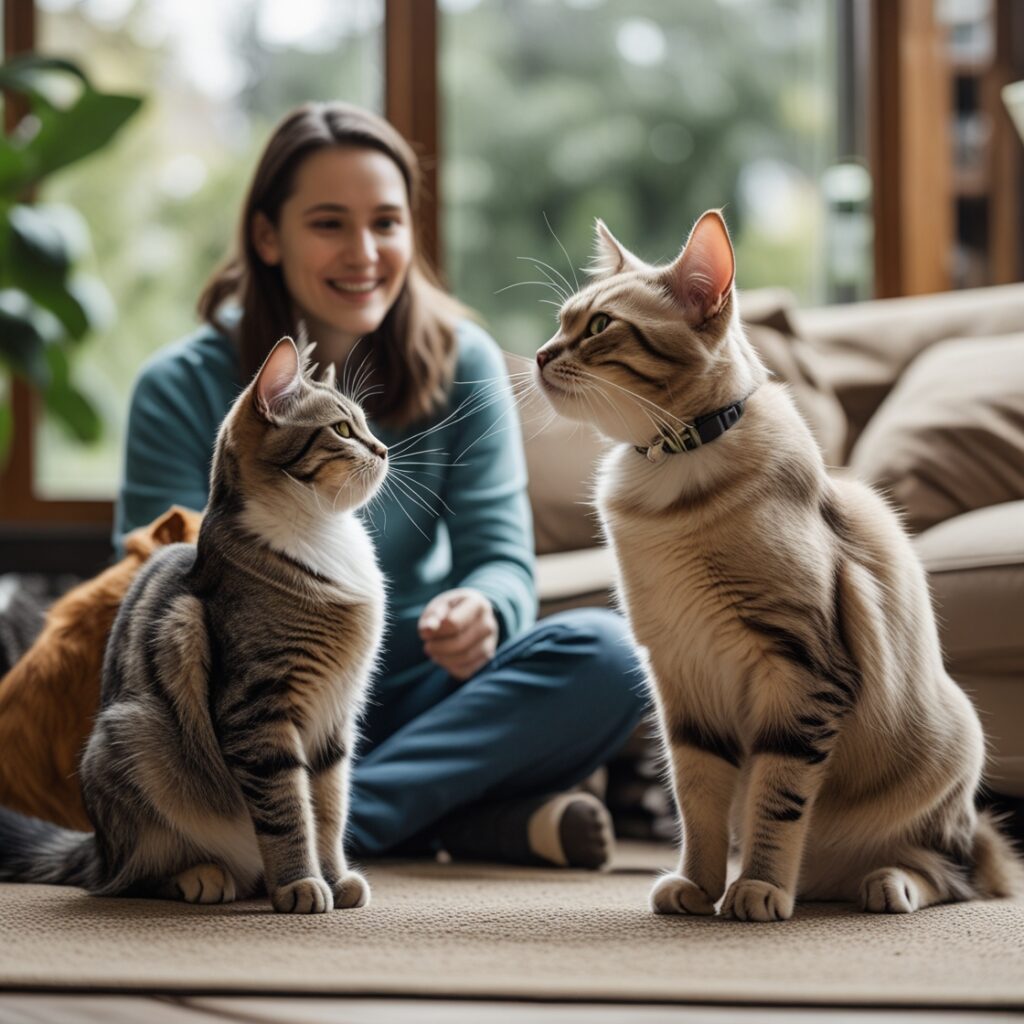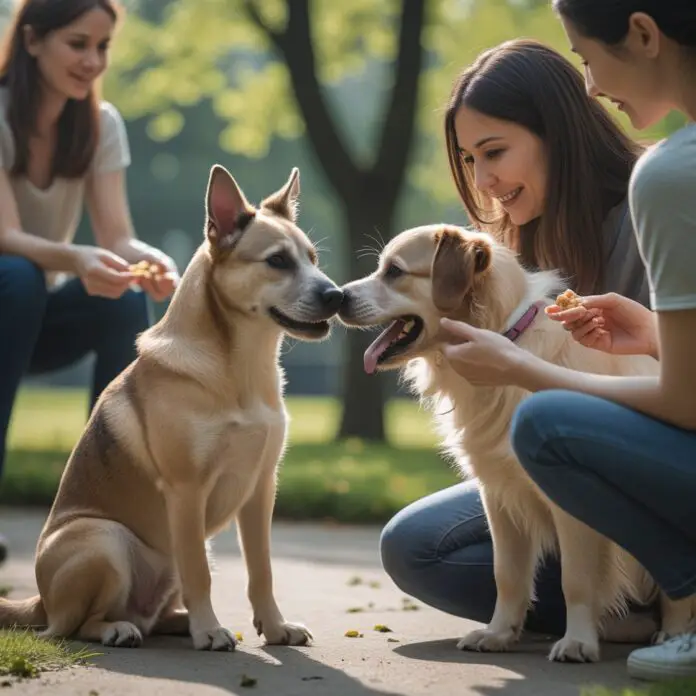Have you ever felt your heart sink as your usually lovable pet cowers in fear or lashes out unexpectedly when faced with new people or situations? You’re not alone. Many pet owners struggle with shy or reactive pets, feeling helpless and frustrated. But here’s the good news: with patience, understanding, and the right techniques, you can help your furry friend become more confident and sociable. 🐾💖
Imagine the joy of watching your once-timid pup wag its tail at the sight of other dogs in the park, or your previously skittish cat curiously approaching visitors instead of hiding under the bed. These transformations are possible, and in this blog post, we’ll guide you through the process of socializing your shy or reactive pet. From understanding the root causes of their behavior to implementing gradual exposure techniques and maintaining long-term progress, we’ll cover everything you need to know to help your pet thrive in social situations.

Are you ready to embark on this rewarding journey with your four-legged companion? Let’s dive into the key steps of socializing your shy or reactive pet, starting with understanding the underlying reasons for their behavior.
Understanding Your Pet’s Behavior
A. Identifying signs of shyness or reactivity
Recognizing the signs of shyness or reactivity in your pet is crucial for effective socialization. Here are some common indicators to watch for:
- Hiding or avoiding social interactions
- Excessive barking, growling, or hissing
- Trembling or shaking in new situations
- Flattened ears or tucked tail
- Raised hackles or puffed-up fur
- Excessive panting or drooling
- Refusal to take treats in unfamiliar settings
Understanding these signs helps you respond appropriately and create a supportive environment for your pet.
B. Common triggers for shy or reactive pets
| Trigger | Examples |
|---|---|
| Unfamiliar people | Strangers, guests, delivery persons |
| Other animals | Dogs, cats, wildlife |
| Loud noises | Fireworks, traffic, construction |
| New environments | Vet clinics, parks, unfamiliar homes |
| Sudden movements | Quick gestures, running children |
Identifying your pet’s specific triggers allows you to develop targeted strategies for desensitization and counter-conditioning.
C. The importance of patience and consistency
Socializing a shy or reactive pet requires:
- Consistent daily practice
- Gradual exposure to triggers
- Positive reinforcement techniques
- Respecting your pet’s boundaries
- Celebrating small victories
Remember, progress may be slow, but with patience and persistence, you can help your pet become more confident and social. As we move forward, we’ll explore how to create a safe environment that supports your pet’s socialization journey.
Creating a Safe Environment
Establishing a quiet, comfortable space
Creating a safe haven for your shy or reactive pet is crucial for their well-being and socialization progress. Designate a quiet area in your home where your pet can retreat when feeling overwhelmed. This space should be:
- Away from high-traffic areas
- Free from loud noises
- Easily accessible to your pet
- Equipped with comfortable bedding
- Stocked with familiar toys and objects
Minimizing stressors in the home
Reducing environmental stressors is key to helping your pet feel secure. Consider the following steps:
- Control noise levels
- Limit exposure to sudden movements
- Use window coverings to block outside stimuli
- Maintain a consistent daily routine
- Keep visitors to a minimum initially
| Potential Stressor | Mitigation Strategy |
|---|---|
| Loud noises | Use white noise machines or soft music |
| Visual triggers | Install opaque window films or curtains |
| Unfamiliar scents | Use pheromone diffusers or sprays |
| Unpredictable events | Establish a consistent daily schedule |
Using calming aids and techniques
Incorporate calming aids and techniques to further support your pet’s comfort:
- Thundershirts or anxiety wraps
- Pheromone diffusers (e.g., Feliway for cats, Adaptil for dogs)
- Calming music designed for pets
- Gentle massage or TTouch therapy
- Aromatherapy with pet-safe essential oils
By creating a safe environment, you’re laying the foundation for successful socialization. This secure base will give your pet the confidence to gradually explore and interact with the world around them. As we move forward, we’ll explore gradual exposure techniques that build upon this safe environment.

Gradual Exposure Techniques
Introducing new people slowly
When socializing a shy or reactive pet, introducing new people gradually is crucial. Start with calm, quiet individuals who understand pet behavior. Here’s a step-by-step approach:
- Begin at a distance
- Use treats as positive reinforcement
- Allow the pet to approach voluntarily
- Gradually decrease distance over time
| Stage | Distance | Duration | Interaction Level |
|---|---|---|---|
| 1 | 10+ feet | 5-10 min | Visual only |
| 2 | 5-7 feet | 10-15 min | Quiet talking |
| 3 | 3-5 feet | 15-20 min | Offering treats |
| 4 | 1-3 feet | 20-30 min | Gentle petting |
Controlled interactions with other animals
Carefully managed encounters with other pets can help your shy animal build confidence. Choose calm, well-socialized animals for these interactions. Use barriers like fences or leashes to maintain control and safety.
Positive reinforcement during social situations
Reward your pet’s brave behavior with treats, praise, or favorite toys. This creates positive associations with social experiences. Be consistent and patient, celebrating small victories along the way.
Building confidence through short, successful encounters
Keep initial social interactions brief and positive. Gradually increase duration as your pet becomes more comfortable. Remember, quality over quantity is key in building lasting confidence.
Now that we’ve explored gradual exposure techniques, let’s move on to specific training methods that can further enhance your pet’s socialization skills.
Training Methods for Socialization
Desensitization exercises
Desensitization is a key technique in socializing shy or reactive pets. This method involves gradually exposing your pet to stimuli that trigger anxiety or fear, but at a low intensity that doesn’t provoke a negative reaction.
Here’s a simple desensitization exercise you can try:
- Identify the trigger (e.g., other dogs, loud noises)
- Start with a very mild version of the trigger (e.g., a dog at a great distance)
- Slowly increase exposure over time
- Always stay below your pet’s stress threshold
| Step | Action | Duration |
|---|---|---|
| 1 | Expose to trigger at a distance | 5-10 minutes |
| 2 | Gradually decrease distance | 1-2 weeks |
| 3 | Increase duration of exposure | 2-3 weeks |
| 4 | Introduce variations of trigger | 3-4 weeks |
Counter-conditioning techniques
Counter-conditioning goes hand-in-hand with desensitization. It involves changing your pet’s emotional response to a trigger by associating it with something positive.
- Pair the trigger with high-value treats or toys
- Use a cheerful voice during exposure
- Practice in short, frequent sessions
Clicker training for positive associations
Clicker training is an excellent tool for creating positive associations. The click sound marks the exact moment your pet performs a desired behavior, followed by a reward.
- Introduce the clicker
- Click and treat for calm behavior around triggers
- Gradually increase difficulty of situations
Teaching basic obedience commands
Basic obedience commands provide structure and boost your pet’s confidence. Focus on:
- Sit
- Stay
- Come
- Leave it
These commands can help redirect your pet’s attention in stressful situations. Practice in a variety of environments to ensure your pet responds reliably. Remember, consistency and patience are key in all these training methods. With time and practice, your shy or reactive pet can become more comfortable in social situations.
Professional Help and Resources
When to consult a professional trainer
Knowing when to seek professional help is crucial for effectively socializing your shy or reactive pet. Consider consulting a professional trainer if:
- Your pet’s behavior isn’t improving with home-based techniques
- Your pet shows signs of aggression or extreme fear
- You feel overwhelmed or unsure about handling your pet’s socialization needs
A professional can provide tailored strategies and expert guidance to address your pet’s specific challenges.
Benefits of group training classes
Group training classes offer numerous advantages for socializing shy or reactive pets:
| Benefits | Description |
|---|---|
| Controlled environment | Safe space for gradual exposure to other animals and people |
| Expert supervision | Trainer guidance to manage interactions and prevent negative experiences |
| Peer learning | Opportunity for pets to learn from well-socialized animals |
| Owner education | Valuable tips and techniques for continuing socialization at home |
Working with a veterinary behaviorist
For more complex cases, a veterinary behaviorist can provide specialized help:
- Comprehensive behavioral assessment
- Medical evaluation to rule out underlying health issues
- Tailored behavior modification plans
- Potential medication recommendations to support training efforts
Veterinary behaviorists combine medical knowledge with behavioral expertise, offering a holistic approach to pet socialization. Their insights can be particularly valuable for pets with severe anxiety or reactivity issues that haven’t responded to standard training methods.
Now that we’ve explored professional resources, let’s look at how to maintain the progress you’ve made in socializing your pet.
Maintaining Progress
A. Consistent practice and reinforcement
Maintaining progress in socializing your shy or reactive pet requires dedication and consistency. Regular practice is key to reinforcing positive behaviors and building confidence. Here are some effective strategies:
- Daily short training sessions (5-10 minutes)
- Frequent, controlled exposure to various stimuli
- Consistent use of positive reinforcement techniques
- Regular outings to familiar, low-stress environments
| Practice Type | Frequency | Duration | Benefits |
|---|---|---|---|
| Training | Daily | 5-10 min | Skill reinforcement |
| Exposure | 2-3x/week | 15-30 min | Desensitization |
| Outings | Weekly | 30-60 min | Real-world practice |
B. Recognizing and celebrating small improvements
Acknowledging your pet’s progress, no matter how small, is crucial for motivation and reinforcement. Keep a progress journal to track improvements and celebrate milestones:
- First successful interaction with a stranger
- Reduced reaction to specific triggers
- Increased comfort in new environments
- Longer duration of calm behavior in social situations
C. Adapting strategies as your pet grows more confident
As your pet becomes more socialized, it’s important to adjust your approach:
- Gradually increase the complexity of social situations
- Introduce new challenges at a comfortable pace
- Modify reward systems to maintain engagement
- Expand the variety of environments for socialization
D. Continuing socialization throughout your pet’s life
Socialization is an ongoing process that should continue throughout your pet’s life. Regular exposure to new experiences helps maintain social skills and prevents regression. Incorporate socialization into your pet’s routine:
- Arrange playdates with familiar pets
- Visit pet-friendly establishments
- Participate in group training classes or social events
- Expose your pet to various people, animals, and environments
Remember, every pet progresses at their own pace. Stay patient and consistent, and you’ll see continued improvement in your pet’s social confidence over time.
Conclusion
Socializing a shy or reactive pet requires patience, understanding, and a consistent approach. By creating a safe environment, using gradual exposure techniques, and implementing effective training methods, you can help your furry friend become more comfortable in social situations. Remember that every pet is unique, and progress may take time.

As you embark on this journey with your pet, don’t hesitate to seek professional help or explore additional resources when needed. With dedication and the right strategies, you can support your pet in overcoming their fears and anxieties, ultimately leading to a happier and more confident companion. Keep maintaining the progress you’ve made, and celebrate each small victory along the way.



